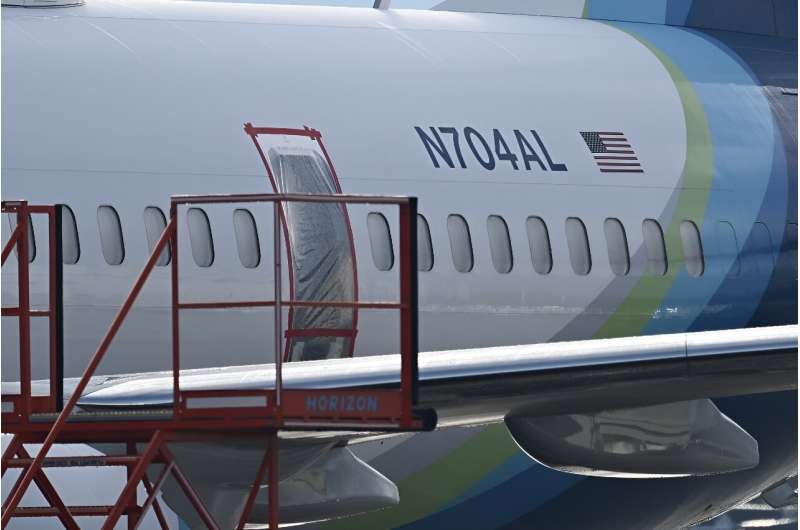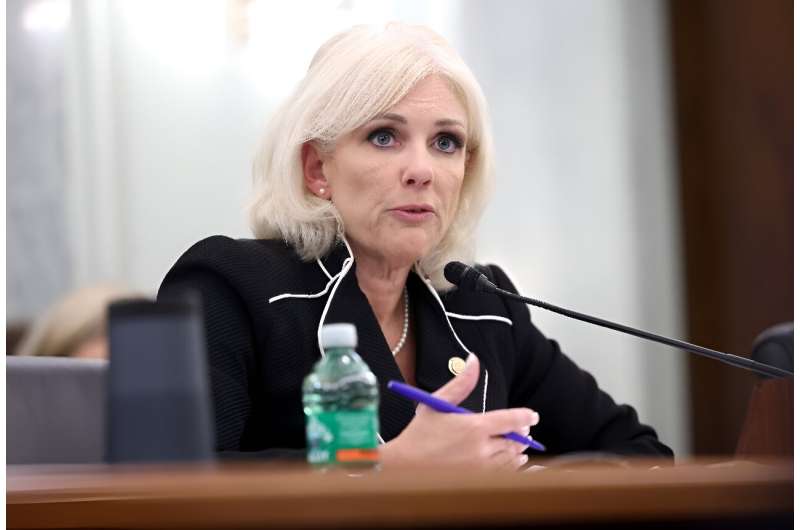
US investigators will on Tuesday open a two-day hearing into a near-catastrophic January incident on a Boeing 737 MAX operated by Alaska Airlines that required an emergency landing.
Video of the episode showed oxygen masks hanging in front of a gaping airplane space from a panel that blew out shortly after takeoff, leaving passengers exposed to open air at an altitude of about 16,000 feet.
The hearing in Washington aims "to determine the facts, circumstances, and probable cause of the transportation accident... and to make recommendations to improve transportation safety," said the National Transportation Safety Board, which is overseeing the probe.
The plane soon went back to Portland where it safely landed, although there were eight minor injuries.
The NTSB immediately launched a probe and after a month said four bolts securing the panel were missing, according to preliminary findings released February 6.
The agency has collected written documents and photos showing that Boeing employees removed four bolts from these locations during an inspection at the Renton plant in Washington state prior to delivery of the aircraft last October.
Over the course of two day-long sessions on Tuesday and Wednesday in Washington, the NTSB will hear from about 15 witnesses.
Speakers include Elizabeth Lund, senior vice president for quality at Boeing, among other officials at the company, as well as officials from key supplier Spirit AeroSystems, regulator Federal Aviation Administration and the machinists union.
The witness list does not include Alaska Airlines.
Lund came under fire from the NTSB after providing a detailed summary of the incident in June to journalists touring the company's Renton plant.

Boeing staff identified five "non-conforming" rivets in the fuselage after the arrived in Renton, but the issue "did not create a safety hazard," Lund told reporters.
But when the fuselage panel, known as the door plug, was removed to replace the rivets, Boeing staff failed to file the documentation to make the change on the door plug, Lund said.
"We believe that plug was opened without the correct paperwork," Lund told reporters. "There was a non-compliance to our processes at that point."
She also said Boeing was focused on closing a "gap" over the lack of documentation and that determining who did the work "is the responsibility of the NTSB and that investigation is still going on."
Boeing sanctioned
After Lund's comments were published in June, the NTSB announced it was sanctioning the company for sharing details about an ongoing probe that were not supposed to be discussed publicly.
Lund "released non-public investigative information and made unsubstantiated speculations about possible causes of the Jan. 5 door-plug blowout, which is directly at issue in the ongoing investigation," the NTSB said in a June 27 letter to Boeing CEO Dave Calhoun.
Some of the information "was either inaccurate or unknown to the NTSB," the letter added. "This disregard of the federal regulations and rules governing NTSB investigations cannot be tolerated."
As a result, the NTSB said it is blocking Boeing from reviewing information gathered in its investigation and will not permit the company to ask questions of other witnesses at the hearing.
NTSB Chair Jennifer Homendy in March had also sharply criticized Boeing's handling of the probe, telling a congressional hearing the company was dragging its feet in providing key documentation and witnesses involved in working on the plane.
Tuesday's hearing comes as Boeing faces heavy scrutiny from regulators following the January incident and in the wake of congressional testimony from whistleblowers who say the company punishes workers who raise safety issues while moving to cover up problems.
© 2024 AFP
Citation: Hearing to probe Alaska Airlines emergency on Boeing jet (2024, August 6) retrieved 6 August 2024 from https://techxplore.com/news/2024-08-probe-alaska-airlines-emergency-boeing.html
This document is subject to copyright. Apart from any fair dealing for the purpose of private study or research, no part may be reproduced without the written permission. The content is provided for information purposes only.
